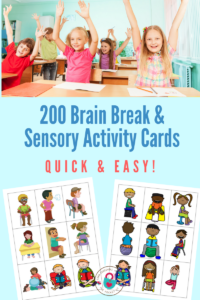Hi loyal readers and welcome to our new fans! I am happy to tell you that
the Future Horizons autism conference in Columbus, Ohio was a HUGE success. Over 650 folks attended and we learned SO much as well as had a great time. This conference featured Carol Stock Kranowitz, Cara Koscinski, and Temple Grandin. Here’s a photo we took of the speakers:
As always, I encourage questions from the audience. The old saying goes, ‘if someone asks a question, there’s a good chance that another person has that same question but was too afraid to ask.’
1) Does my child’s school have to follow his 504 plan?
YES! While researching for my Special Needs SCHOOL Survival book, I looked for helpful tips and ideas that could be used immediately with your student. The 504 plan falls under section 504 of the Rehabilitation Act of 1973. So, this is a FEDERAL Civil Rights law that prohibits discrimination of students with disabilities. Here are some of my favorite websites for school information:
Wrightslaw
Understood
Adults with Disabilities ***I include this because even adults with disabilities can qualify for a 504 plan at work….no kidding!***
Also, consult the website for your child’s specific disability. ADHD, autism, food allergy, Down Syndrome, Mitochondrial Disease websites all provide great information on specific accommodations for children who qualify.
2) Can anyone use mindfulness and calming activities or do you have to be certified in them?
Anyone can try mindfulness! If you need some tips, check out
this earlier blog post packed with tips for mindfulness. By definition, mindfulness helps bring our awareness to the present or ‘in the moment.’ Have you ever driven to work and when you parked thought, ‘I have no idea how I got here, I daydreamed the entire car ride!’ Me too! We get so busy with our lives that we pack it all in and forget to take a few minutes to focus on our surroundings, breathing, the way our body feels, etc.
Taking some deep breaths or describing three things you see or smell around you can re-focus you to the task at hand.
3) My daughter loves eating things with Italian dressing on them but when I try to get her to eat without the dressing, she refuses. What do I do?
We all know someone or perhaps we were the kid who always ate hot dogs or puts catchup on everything! When someone experiences sensory integration difficulties, things such as food, texture, and smell can cause a true fight or flight (panic) reaction. When this occurs, we remember the experience and file it under the ‘won’t try that again’ file. Often times a certain texture or even the sight of food can evoke a reaction. Our mind’s job is to keep our body safe and we do whatever is necessary to keep calm and relaxed. For some of us, adding or dipping our food in Bar-B-Q, mustard, etc. gives familiarity and allows us to consume food. My advice is to let your children play with their food and even add whatever flavor they choose in order to eat the food. After all, who make the rules of what condiments go on specific foods? NO ONE 🙂
4) Am I ‘allowed’ to create a sensory space at home or does an OT have to create it?

I’m SO glad you asked! Anyone can create a safe sensory place. Think about your ‘cozy’ place. Technically, it’s your safe spot. To begin, ask your child what toys he prefers. Does he like to move his hands to fidget? If so, place some fun toys such as a
Tangle, Spaghetti ball, or
DNA ball (my favorite). Add a cozy blanket or weighted lap pad and a few pillows to give that ‘squishing’ feeling. My clients often prefer lower or dimmed lighting so I add a flashlight just in case. If you have questions, ask your OT or consult my book,
The Parent’s Guide to OT for Autism & Special Needs.Read my earlier post by clicking here.
5) What are some ‘brain breaks’ we can use in our class or homeschool?
This is one of my most frequently asked questions! Kids need to move, you need to move. Think about your own behavior when bored or stressed. Chances are that you bounce your leg, play with your hair, twiddle your thumbs, or move your mouth to chew your lip or even ice. The fact is that everyone benefits from regular movement breaks to give our brains much needed oxygen.
Here’s the link to one of my most popular blog post about brain breaks and why kids fidget.Remember that pushing, pulling, lifting, and carrying a weighted or heavy item is the most effective way to gain calming proprioceptive input to the body. Jumping jacks, wall push-ups, and large arm circles are easy and cost nothing. Move slowly and then quickly to mix it up. Play some music and allow children to move as they wish to the beat.
PS: I sold
Thanks for each of you who asked awesome questions and keep them coming!


 I’m SO glad you asked! Anyone can create a safe sensory place. Think about your ‘cozy’ place. Technically, it’s your safe spot. To begin, ask your child what toys he prefers. Does he like to move his hands to fidget? If so, place some fun toys such as a Tangle, Spaghetti ball, or DNA ball (my favorite). Add a cozy blanket or weighted lap pad and a few pillows to give that ‘squishing’ feeling. My clients often prefer lower or dimmed lighting so I add a flashlight just in case. If you have questions, ask your OT or consult my book, The Parent’s Guide to OT for Autism & Special Needs.
I’m SO glad you asked! Anyone can create a safe sensory place. Think about your ‘cozy’ place. Technically, it’s your safe spot. To begin, ask your child what toys he prefers. Does he like to move his hands to fidget? If so, place some fun toys such as a Tangle, Spaghetti ball, or DNA ball (my favorite). Add a cozy blanket or weighted lap pad and a few pillows to give that ‘squishing’ feeling. My clients often prefer lower or dimmed lighting so I add a flashlight just in case. If you have questions, ask your OT or consult my book, The Parent’s Guide to OT for Autism & Special Needs.



